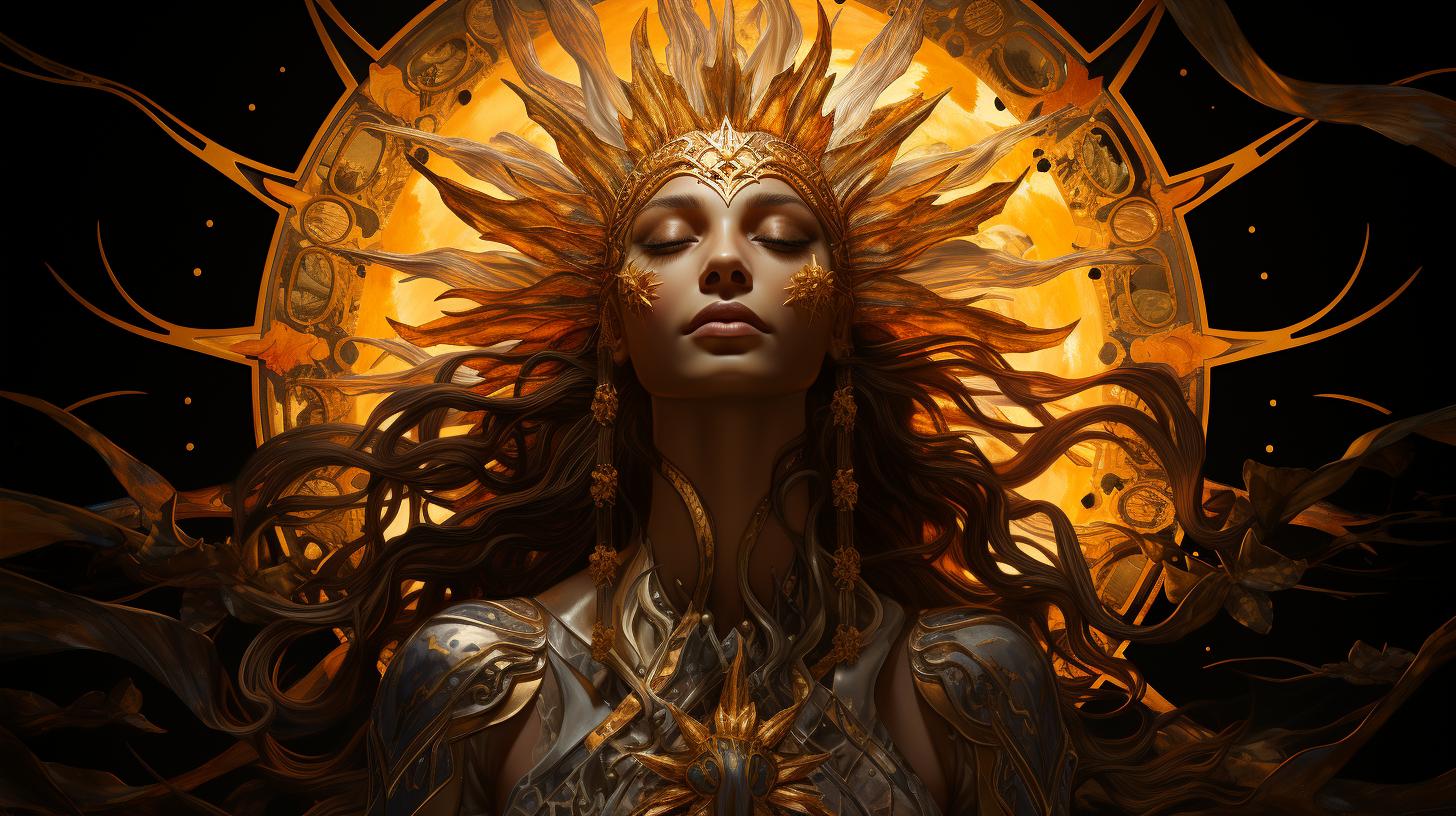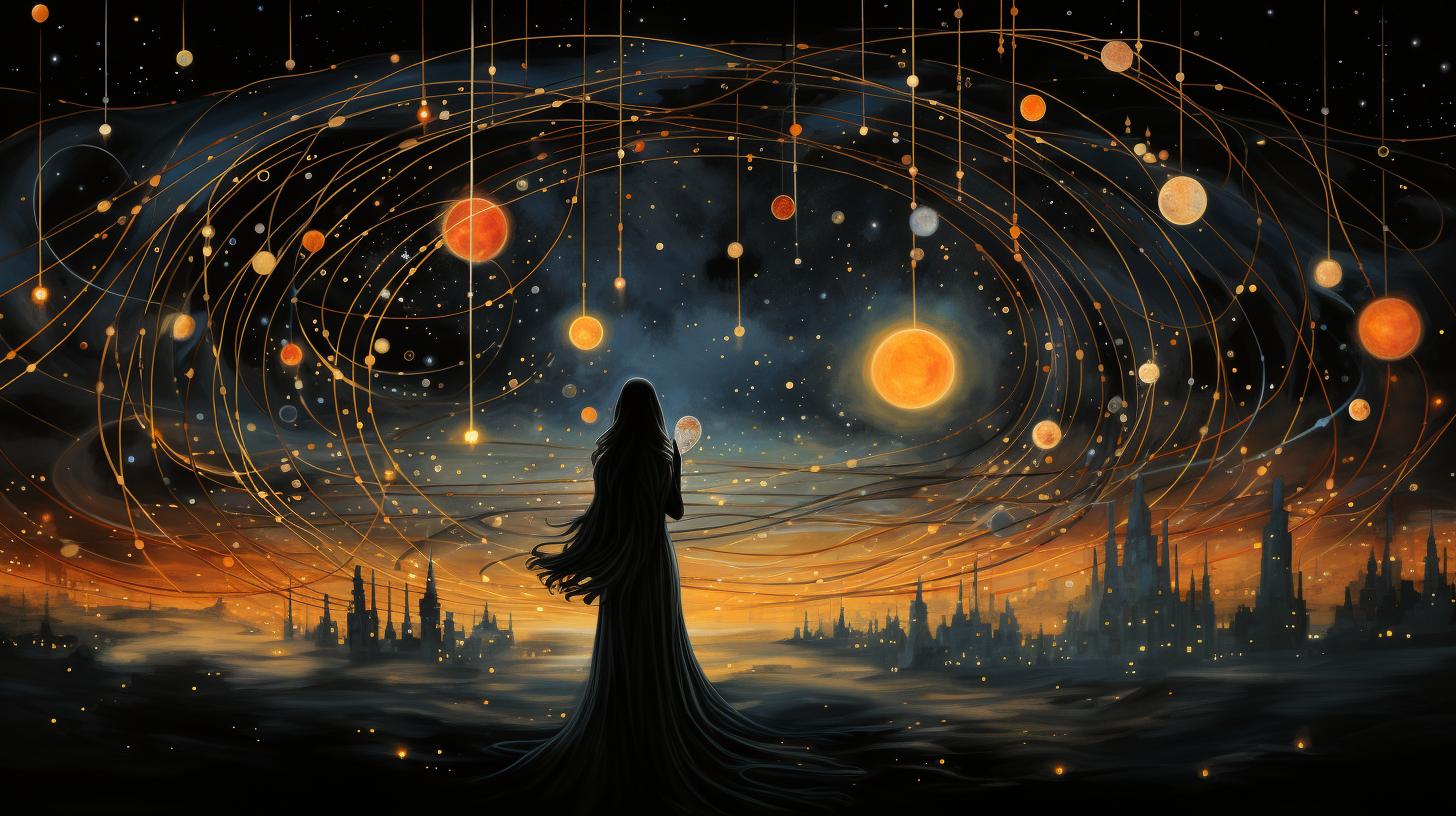Anagolay: The Enigmatic Goddess of Lost Things

The mythology of Anagolay dates back to precolonial times in the Philippines. Anagolay, the goddess of lost things, is described as an enigmatic deity with a deep connection to nature and the cyclical aspects of life.
She is known for her ability to find not only physical possessions but also abstract concepts like lost opportunities and faded memories. While relatively unknown in modern popular culture, Anagolay’s essence and the universal theme of searching for what is lost can be found in various contemporary references.
Her significance is further recognized internationally with an asteroid named in her honor.
The Mythology of Anagolay
Anagolay, the enigmatic goddess of lost things, holds a significant place in Philippine mythology. This section explores her origin and her role within the rich tapestry of Philippine folklore.
The Origin of Anagolay
Anagolay emerges from the lineage of Lakapati, the goddess of fertility, and Mapulon, the god of seasons. This divine parentage endows her with a deep connection to the cyclic nature of life and the creative energies that propel it forward.
Anagolay’s Role in Philippine Mythology
Anagolay occupies a unique position in Philippine mythology as the goddess of lost things. Beyond mere physical possessions, her influence extends to abstract concepts such as lost opportunities and fading memories.
She embodies the universal human experience of loss and the innate longing for restoration.
In the era before modern religions arrived, indigenous Filipinos lacked structured belief systems to address existential questions. Deities like Anagolay served as frameworks for understanding life’s enigmas and attributing significance to various aspects of the human experience.
Though not widely recognized in contemporary popular culture, Anagolay’s essence and the theme of searching for what is lost can be found in various contemporary references.
Anagolay: The Goddess of Lost Things
Anagolay, an enigmatic deity in Philippine mythology, holds the title of the Goddess of Lost Things.
In this role, she embodies the universal theme of loss and restoration. Let’s explore the descriptions, symbolism, powers, and influence associated with Anagolay.
Descriptions and Symbolism
Anagolay is often portrayed as a mysterious figure with long, black hair, and possesses a radiant brown complexion. She dons a red dress adorned with golden accents, symbolizing her power to find lost objects.
These physical characteristics reflect her inherent connection with the cycles of life and the powerful forces that drive creation.
Anagolay’s Powers and Influence
Beyond tangible possessions, Anagolay’s domain extends to abstract concepts such as missed opportunities and faded memories. As the Goddess of Lost Things, she represents the universal human experience of longing and the innate desire for restoration.
Individuals seek her guidance and intervention to recover what has been lost, be it physical items or intangible aspects of their lives.
Anagolay’s influence reaches beyond the realm of material possessions, as she holds the power to unlock hidden opportunities and rekindle forgotten memories.
She offers solace and hope, reminding individuals that what may seem lost can still be found with perseverance and faith.
Anagolay’s Family and Relationships
Anagolay, the goddess of lost things, has a rich familial background within Philippine mythology. Her parentage can be traced back to Lakapati, the goddess of fertility, and Mapulon, the god of seasons.
This lineage connects her deeply to the cyclic nature of life and the creative forces that drive it.
Parentage: Lakapati and Mapulon
Lakapati, as the goddess of fertility, represents the abundance found in nature, while Mapulon, the god of seasons, governs the ever-changing cycles of life. Anagolay’s relationship with her parents grants her a unique perspective on the natural world and its continuous renewal.
Marriage and Offspring: Dumakulem, Apolaki, and Dian Masalanta
Anagolay is married to Dumakulem, another prominent figure in the Filipino pantheon. Together, they have two children. Apolaki, their son, is associated with the sun, symbolizing strength and vitality.
Dian Masalanta, their daughter, presides over matters of the heart, embodying love and compassion.
The union of Anagolay and Dumakulem brings together various aspects of Filipino mythology, representing the power of the sun and the importance of emotions and relationships in human life.
The Universal Theme of Loss and Restoration
‘The Universal Theme of Loss and Restoration’ explores the profound significance of Anagolay as a representation of human experience. She transcends the mere recovery of physical possessions, extending into the realm of abstract concepts such as lost opportunities and faded memories.
Her presence in Filipino indigenous beliefs provides a framework for understanding the complexities of loss and the innate longing for restoration.
Anagolay as a Representation of Human Experience
Anagolay’s role as the Goddess of Lost Things goes beyond the tangible and explores the emotional and existential aspects of loss. She symbolizes the universal human experience of yearning for that which has been lost.
Her enigmatic nature and connection to nature’s cyclical patterns reflect the ebb and flow of life, mirroring the inherent human desire for wholeness and restoration.
Conceptualizing Loss and Longing in Filipino Indigenous Beliefs
Filipino indigenous beliefs lacked structured systems to tackle existential questions before the advent of modern religions.
Deities like Anagolay served as metaphors for understanding the mysteries of life and assigning significance to diverse aspects of the human experience. In this context, the concept of loss and longing found expression through Anagolay, epitomizing the innate human need for restoration and the search for what is missing.
- Loss as a transformative experience: Anagolay personifies the transformative power of loss, representing the potential for growth and self-discovery that emerges from the experience.
- Longing for what is lost: Anagolay’s portrayal encapsulates the universal longing to retrieve what has been lost, highlighting the yearning for completeness and the human desire to find solace in restoration.
- Anagolay’s role in healing and reconciliation: In Filipino indigenous beliefs, Anagolay holds the key to healing and reconciliation, offering a path towards finding what is lost and reintegrating it into one’s life.
The universal theme of loss and restoration showcased by Anagolay’s story resonates across cultures, transcending time and geographic boundaries.
It taps into the fundamental human yearning for connection, wholeness, and the restoration of what is missing in our lives.
Anagolay in Contemporary Culture
Anagolay’s Relevance and Recognition
Anagolay, the enigmatic goddess of lost things, continues to hold significance in contemporary Filipino culture. Despite being less known in modern popular culture, her essence and the universal theme of searching for what is lost resonate with many.
Artists, writers, and filmmakers have drawn inspiration from Anagolay’s story, incorporating her into their works as a symbol of longing and restoration. Additionally, her unique characteristics and role in mythology have captured the interest of scholars and researchers, who explore her significance within the broader context of Filipino belief systems.
Anagolay’s Influence Outside of the Philippines
While Anagolay’s prominence primarily lies within the Philippines, her story and symbolism have also reached international audiences. As globalization spreads cultural diversity across borders, Anagolay’s tale captivates people from different backgrounds, resonating with the universal human experience of loss and the desire for restoration.
Scholarly studies and comparative mythological analyses have exposed Anagolay’s intriguing narrative to a wider audience, fostering an appreciation for the richness and depth of Filipino mythology. Through her recognition beyond national boundaries, Anagolay contributes to the global tapestry of mythological narratives and serves as a symbol of the enduring human quest for what is lost.
Anagolay: The Asteroid Named in Her Honor
Anagolay’s significance reached a global scale when a remarkable tribute was paid to her through the naming of an asteroid. This honor was bestowed by Mohammad Alon, a Filipino student, and was chosen amongst thousands of names submitted by 85 countries to the Space Generation Advisory Council.
The proposal highlighting Anagolay’s importance resonated with the council, leading to the selection of her name for this celestial body.
Mohammad Alon’s Proposal and Selection
Mohammad Alon, a passionate advocate for Philippine mythology and cultural heritage, proposed the name Anagolay for an asteroid. His proposal highlighted how Anagolay, as the goddess of lost things, represents the inherent human longing for restoration.
The council recognized the significance of honoring Anagolay’s essence and agreed that naming an asteroid after her would bring attention to Philippine mythology and its timeless themes.
Anagolay’s Global Recognition through Space Generation Advisory Council
The selection of Anagolay’s name for an asteroid showcases the global recognition and appreciation for her role in mythological narratives.
It demonstrates the growing appreciation for diverse cultural beliefs and the importance of preserving indigenous knowledge. Through this recognition, Anagolay’s story and universal themes of loss and restoration can continue to resonate with people worldwide, bridging the gap between ancient mythologies and our modern understanding of the cosmos.
.




















